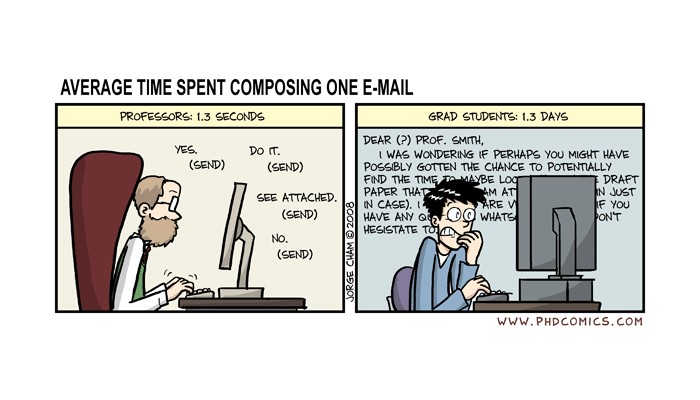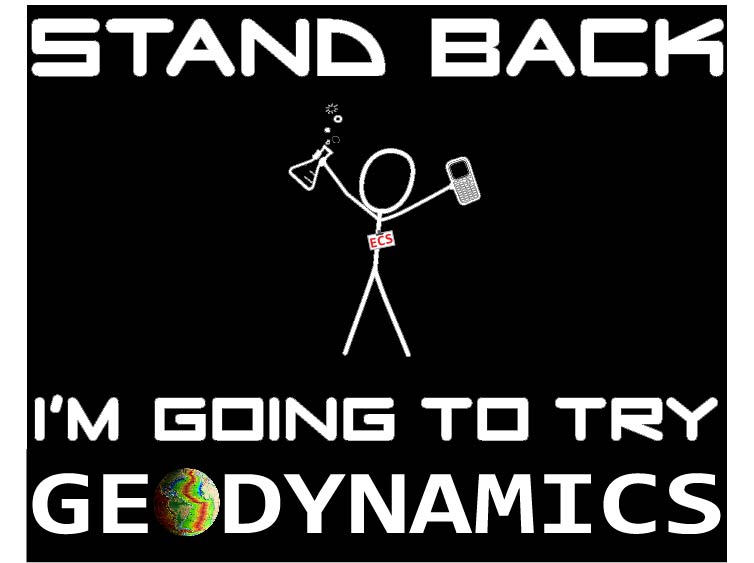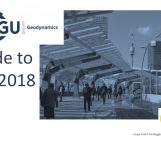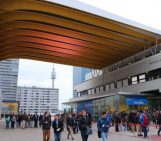
This week Adina Pusok, postdoctoral fellow at the Institute of Geophysics and Planetary Physics (IGPP) at Scripps Institution of Oceanography, University of California San Diego, USA, discusses what it is like to be an Early Career Scientist within the EGU Geodynamics division.
The terms “Early Career Scientist” (ECS) or “Young Scientist” (YS) are now so widely used in the scientific community, that certain meetings, sessions, awards, and social events are entirely dedicated to promote this group of scientists. But what are ECS and YS? These terms were created to describe scientists in the early stages of their career. Because the term Young Scientist might have an age connotation and make some scientists feel excluded, the EGU has recently adopted the ECS term instead. The definition of ECS on the EGU page says “an Early Career Scientists (ECS) is an undergraduate or postgraduate (Masters/PhD) student or a scientist who has received his or her highest degree (BSc, MSc, or PhD) within the past seven years*. (*with additional year(s) of parental leave time per child, where appropriate)”.
Yet, it is still not clear why there is a need to create a subgroup and organize specific activities for this group, when the research community is considered open, where everyone can bring contributions in an equal manner? To answer this, I look back at the first meetings I attended as a PhD student. I remember I felt intimidated by the experience and scientific eloquence of the more established scientists (especially the “big names” in the field), only because I knew there was still a lot for me to learn and experience to gain. And I am sure I was not the only PhD student experiencing this. The truth is, ECS have different needs compared to established scientists. The list of challenges for ECS is long (see this special issue in Nature). Besides doing research, ECS need to promote their work, socialize more to expand their network, enter the very competitive job market, and not to mention present and defend their scientific achievements to an unknown audience. For many established scientists, these are stages past gone. Everyone knows them, everyone talks about their work.
As an ECS, I value the interactions with established scientists, but I also welcome events organized for ECS (i.e. career development or social events, such as grant writing and academic presentation courses). However, I feel the best outcome is achieved when both established and early career scientists support and participate in these events. Which is why I agreed to be the ECS representative for the EGU Geodynamics division (GD) – to bring together and improve visibility of ECS in the GD community. And for the occasional beer and karaoke special sessions (see last week’s blog post) with other ECS Geodynamicists.
What does EGU do to support ECS?
A large proportion of the Union’s members consists of scientists in the early stages of their career. For this reason, EGU wants to offer support to this group, by providing reduced conference fees, recognizing outstanding students, awarding travel grants, organizing short courses, arranging networking possibilities and more. Besides, the EGU encourages further support at the division level, such as outreach activities (e.g. blogs and social media), social events, mentoring programs or short courses at the General Assembly. All ECS need to do is pay attention to the opportunities provided.
Probably a lot more could be done, but small contributions can already make a huge difference. For example, the ability to attend a conference due to an awarded travel grant can be very important to meet other scientists and create exposure for your research, create future collaborations or even sign up for that future job.
What can ECS do for themselves?
Other than help create the environment they want to be in? It might sound idealistic or as too much work involved, but again, small steps can go a long way. Anything from organizing to participating, from being informed to inform others, from taking part in outreach to supporting outreach activities, from mentoring to being mentored, the ECS can contribute in various ways to their own and their community’s development.
In Geodynamics, there are many enthusiastic and fun ECS that get together at meetings and workshops, create friendships and collaborations across national and academic borders. I’ve met enough of them to believe that GD ECS can create a more coherent structure under the EGU umbrella. For example, within less than 1 year, the GD ECS have managed to launch the EGU GD Facebook page, organize social events at major conferences (AGU Fall Meeting 2016, EGU General Assembly 2017), and recently, launch the EGU Geodynamics Blog.

Adapted from www.xkcd.com and www.soest.hawaii.edu
More things can be done though. There is currently a strong need for scientists to become more actively involved in science public outreach worldwide, and this is one of the directions where GD ECS can contribute easily. Geodynamics is a field known for “beautiful pictures” that show the complexity and dynamics of natural processes. Thus, highlighting the diversity of Geodynamics studies (numerical simulations, laboratory experiments, or data compilations) to a wider audience can benefit the research community at large.
Because all these initiatives are run by members, there is always a need for motivated people with refreshing ideas. This is why, I encourage other ECS to bring forward new ideas that we can develop within the GD division (see how to get involved). Along with the rest of GD ECS volunteers, I look forward to working with you!
By Adina Pusok
As the ECS GD representative, I am the link between the EGU and the ECS GD community. I provide EGU with feedback from students and early career researchers, so that the union can take action to improve the ECS activities at the EGU General Assembly and maintain the support for early career scientists throughout the year. I am also involved in public and community outreach of the Geodynamics division.




